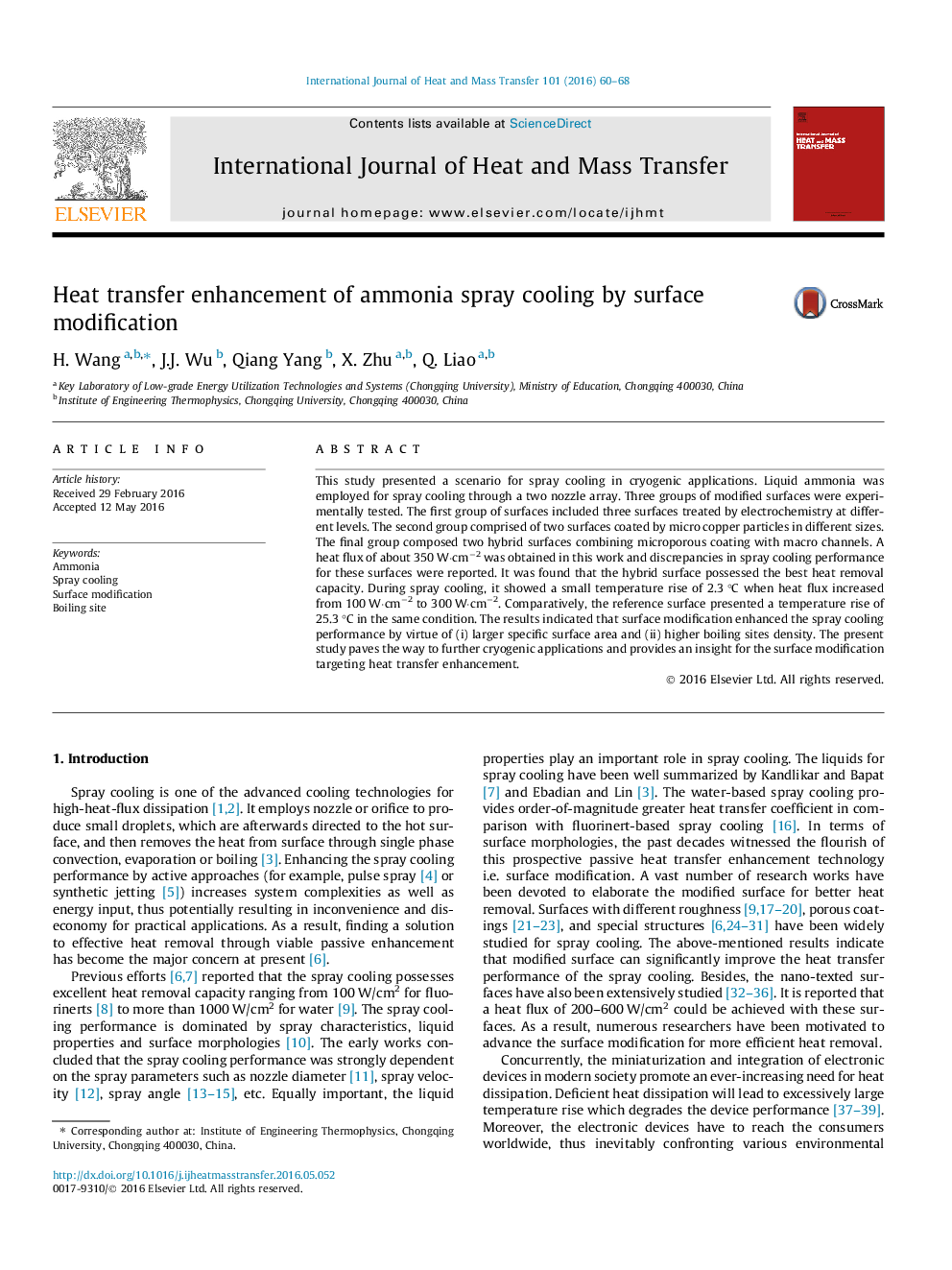| Article ID | Journal | Published Year | Pages | File Type |
|---|---|---|---|---|
| 7055151 | International Journal of Heat and Mass Transfer | 2016 | 9 Pages |
Abstract
This study presented a scenario for spray cooling in cryogenic applications. Liquid ammonia was employed for spray cooling through a two nozzle array. Three groups of modified surfaces were experimentally tested. The first group of surfaces included three surfaces treated by electrochemistry at different levels. The second group comprised of two surfaces coated by micro copper particles in different sizes. The final group composed two hybrid surfaces combining microporous coating with macro channels. A heat flux of about 350 W·cmâ2 was obtained in this work and discrepancies in spray cooling performance for these surfaces were reported. It was found that the hybrid surface possessed the best heat removal capacity. During spray cooling, it showed a small temperature rise of 2.3 °C when heat flux increased from 100 W·cmâ2 to 300 W·cmâ2. Comparatively, the reference surface presented a temperature rise of 25.3 °C in the same condition. The results indicated that surface modification enhanced the spray cooling performance by virtue of (i) larger specific surface area and (ii) higher boiling sites density. The present study paves the way to further cryogenic applications and provides an insight for the surface modification targeting heat transfer enhancement.
Related Topics
Physical Sciences and Engineering
Chemical Engineering
Fluid Flow and Transfer Processes
Authors
H. Wang, J.J. Wu, Qiang Yang, X. Zhu, Q. Liao,
